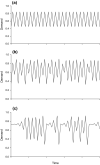Demand-capacity modelling and COVID-19 disease: identifying themes for future NHS planning
- PMID: 32438510
- PMCID: PMC7280563
- DOI: 10.1111/anae.15144
Demand-capacity modelling and COVID-19 disease: identifying themes for future NHS planning
Keywords: COVID-19; efficiency; health services research; modelling.
Figures


Similar articles
-
COVID-19 Innovations: Addressing Rapidly Changing Clinical Needs.J Natl Med Assoc. 2020 Jun;112(3):237-238. doi: 10.1016/j.jnma.2020.06.004. J Natl Med Assoc. 2020. PMID: 32709271 Free PMC article. No abstract available.
-
The impact of COVID-19 on academic primary care and public health.J R Soc Med. 2020 Aug;113(8):319. doi: 10.1177/0141076820947053. J R Soc Med. 2020. PMID: 32780967 Free PMC article. No abstract available.
-
COVID-19 pandemic: A new path to intensive care medicine distinction?Anaesth Crit Care Pain Med. 2020 Oct;39(5):545-546. doi: 10.1016/j.accpm.2020.07.010. Epub 2020 Jul 23. Anaesth Crit Care Pain Med. 2020. PMID: 32712304 Free PMC article. No abstract available.
-
Assessment of the preparedness of the Ugandan health care system to tackle more COVID-19 cases.J Glob Health. 2020 Dec;10(2):020305. doi: 10.7189/jogh.10.020305. J Glob Health. 2020. PMID: 33110509 Free PMC article. Review. No abstract available.
-
How prepared is Brazil to tackle the COVID-19 disease?J Glob Health. 2020 Dec;10(2):020321. doi: 10.7189/jogh.10.020321. J Glob Health. 2020. PMID: 33110523 Free PMC article. Review. No abstract available.
Cited by
-
Airway management guidance for the endemic phase of COVID-19.Anaesthesia. 2021 Feb;76(2):251-260. doi: 10.1111/anae.15253. Epub 2020 Sep 13. Anaesthesia. 2021. PMID: 32839960 Free PMC article. Review.
-
Aerosolisation during tracheal intubation and extubation in an operating theatre setting.Anaesthesia. 2021 Feb;76(2):182-188. doi: 10.1111/anae.15301. Epub 2020 Nov 3. Anaesthesia. 2021. PMID: 33047327 Free PMC article.
-
Pre-clinical validation of a turbine-based ventilator for invasive ventilation-The ACUTE-19 ventilator.Rev Esp Anestesiol Reanim (Engl Ed). 2022 Nov;69(9):544-555. doi: 10.1016/j.redare.2021.09.006. Epub 2022 Oct 13. Rev Esp Anestesiol Reanim (Engl Ed). 2022. PMID: 36244956 Free PMC article.
-
Managing the R0 of COVID-19: mathematics fights back.Anaesthesia. 2020 Dec;75(12):1643-1647. doi: 10.1111/anae.15151. Epub 2020 Jun 19. Anaesthesia. 2020. PMID: 32463522 Free PMC article. No abstract available.
-
Double trouble with double-booking: limitations and dangers of overlapping surgery.Br J Surg. 2022 Aug 16;109(9):787-789. doi: 10.1093/bjs/znac244. Br J Surg. 2022. PMID: 35848776 Free PMC article. No abstract available.
References
-
- Cayirli T, Veral E. Outpatient scheduling in health care: a review of literature. Production and Operations Management 2003; 12: 519–49.
-
- Pandit JJ. Practical Operating Theatre Management. Cambridge: Cambridge University Press, 2019.
-
- Bailey NTJ. Queuing for medical care. Applied Statistics 1954; 3: 137–45.
-
- Tlapa D, Zepeda‐Lugo CA, Tortorella GL, et al. Effects of lean healthcare on patient flow: a systematic review. Value in Health 2020; 23: 260–73. - PubMed
Publication types
MeSH terms
LinkOut - more resources
Full Text Sources

